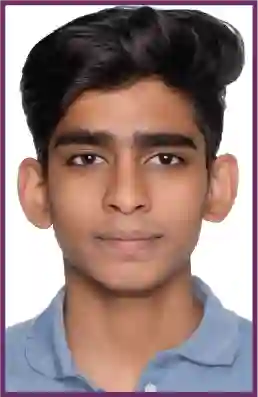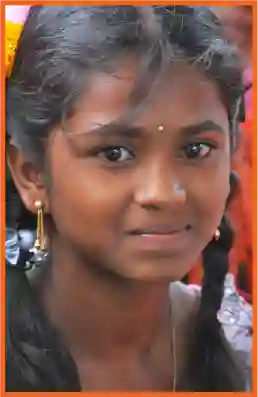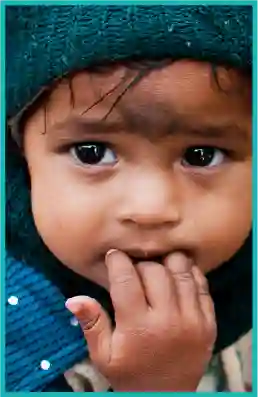CRY America’s child rights model of change is based on its experience and expertise of working with the issues of Indian children. It recognizes that there are several expert organizations in the USA that have a better understanding and greater expertise of working with the situation of US children. Based on the project selection process outlined below, CRY America has partnered with expert organizations in the USA such as:
USA Projects Supported by CRY America
USA Projects Selection Process
Given our understanding and research, CRY America deploys its resources within the following framework to impact the lives of children in the USA:
- Supported Projects should have a meaningful and sustainable impact in the lives of US children – specially reaching out to the most underprivileged and under-served children.
- Supported Projects should be working on critical issues of need and deprivation. Our priorities are the issue of Child Abuse & Neglect and the issue of Child Health.
- Selection criteria for US Projects is as follows:
- Organizations registered as 501c3 public charities
- Organizations working with underprivileged/ under-served US children
- Organizations working on critical issues affecting US children
- Organizations with parents & community outreach
- Organizations should be inclusive + non religious + non political
- Organizations that are working with the US government to improve legislations/ policies/ programs for children or those that work towards ensuring the effective implementation of federal/state programs for children
- Organizations track record should include dissemination of their achievements/ impact, publish their annual reports and are transparent with their organizational information on their website
- USA Grant Allocations & Approvals: Of the total Grants deployed to US Projects:
- 80% will be allocated to national Projects/ Organizations – to be approved by the CRY America Board
- 20% will be allocated to Projects recommended by CRY America Action Centers – to be approved by the CEO & the Volunteer Representative on the Board.
- USA Project Review & Reports:
- National Projects would require to submit documentation to include a Grant Proposal and Year End Grant Report and sign a Grant Agreement if approved.
- Local Projects will be recommended by Action Centers through a Project Recommendation Form along with the organizations latest Annual report. All local projects would need to be visited by the Action Center Representative prior to the recommendation. Please use the AC Project Recommendation Form and send to support@cryamerica.org
Request for Support
If you feel that your organization qualifies for a Grant from CRY America as per the above criteria, please contact support@cryamerica.org
Child Health Statistics [USA]
- 6.9 million children (10%) had no health insurance coverage in 2006
- 13% of children in families with incomes <$20,000
- 17% of children in families with an income from $20,000-$34,999 had no health insurance, compared with 3% of children in families with an income of $75,000 or more.
- Children in single mother families were more likely to be unable to get medical care / receive delayed medical care compared to children in families with two parents
- Children in families with lowest income were twice as likely as children in families with the highest income to have been absent from school for 11 days or more.
- Children in single mother families were twice as likely to be absent from school for 11 days or more in the last 12 months due to illness or injury than children in a two-parent family.
- In 2006, 4.5 million children (7%), 2-17 years of age, had unmet dental needs because their families could not afford treatment.
- 9.9m children under 18 years (14%) were diagnosed with asthma; 6.8 million children (9%) still have asthma – children from poor families are more likely to have asthma.
- 4.7 million children, from 3-17 years of age (8%), had a learning disability. 10% boys had learning disabilities vs. 6% of girls. 4.5 million children, ages 3-17 of age (7%) had ADHD. Boys were two times as likely to have ADHD than girls. Poorer families (incomes < $20,000) had a higher percentage of children with learning disabilities than children from families with an income of $75,000 or greater.
Child Neglect & Abuse Statistics
During Federal fiscal year 2006:
- 905,000 children were maltreated.
- The rate of victimization was 12.1 per 1,000 children in the population
- 3.6 million children received an investigation by CPS agencies. -The rate of investigation was 47.3 per 1,000 children
- The rate of children who received an investigation rose from 43.8 / 1,000 children in 2002 to 47.8 per 1,000 children in 2006
- The highest incidence of victims (20.1 or greater per 1,000 children) were in the states of Iowa, Massachusetts, West Virginia and Florida.
During Federal Financial Year 2006:
- 64.1% of victims experienced neglect
- 16% of victims were physically abused
- 8.8% of victims were sexually abused
- 6.6% of victims were psychologically abused
- 2.2% of victims were medically abused
- 15.1% victims experienced other types of maltreatment such as abandonment, threats of harm to the child or congenital drug addiction.
For FFY 2006, the highest rates of victimization by ethnic group were:
- African American: 19.8 per 1,000 children of the same ethnicity.
- American Indian or Alaskan Native: 15.9 per 1,000 children of the same ethnicity.
- Multiple races: 15.4 per 1,000 children of the same ethnicity.
- 48.8% of all the victims were White, 22.8% of the victims were African American, and 18.4% of the victims were Hispanic.
For FFY 2006, the victim-perpetrator relationship, by the 4 largest categories, was:
- 39.9% were victimized by the mother alone.
- 17.8% were victimized by the father and mother.
- 17.6% were victimized by the father alone.
- 10% were victimized by non-parent perpetrators.
For FFY 2006, child fatalities were:
- 78% of children killed were younger than 4 years.44% of children in this category were <1 year of age. The youngest children experience the highest fatality rate.
- 11.9% were 4-7 years; 4.8%were 8-11 years; 5.4% were 12-17 years; Fatality decreased, in general, with age.
- The largest category, by ethnicity, of fatalities were: 43% of all fatalities were White children, 29.4% were African American children, and 17% were Hispanic children.
- 75.9% of the fatalities were caused by one or more parents. 27.4% of the fatalities were caused by the mother acting alone.
- Maltreatment, by largest three categories, relating to fatalities were neglect (41.1%), maltreatment combinations (31.4%) and physical abuse (22.4%).














